The Pilates Promise
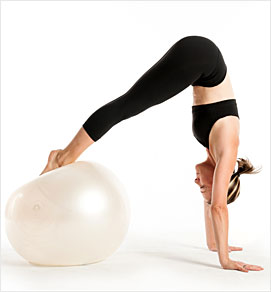 As Joseph Pilates used to say, "in 10 sessions you will feel a difference, in 20 sessions you will see a difference, and in 30 sessions you will have a new body." It may sound corny, but it is true! We at Postively Pilates promise you that if you practice the Pilates Method consistently 2-3 times per week your body will change! We guarantee it! Keep in mind, Pilates is not just about a better body.
As Joseph Pilates used to say, "in 10 sessions you will feel a difference, in 20 sessions you will see a difference, and in 30 sessions you will have a new body." It may sound corny, but it is true! We at Postively Pilates promise you that if you practice the Pilates Method consistently 2-3 times per week your body will change! We guarantee it! Keep in mind, Pilates is not just about a better body.
In addition to a better body, the dramatic changes that can happen from practicing the Pilates method may include:
This is our promise to you. Remember, you must be consistent and committed, practicing 2-3X per week, and the change will come.
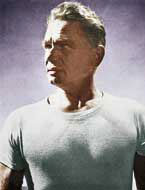
|
Brief History of Joseph Pilates
Joseph H. Pilates was born in Germany in 1880. He was a sickly child who suffered from many ailments including asthma, rickets, and rheumatic fever. Determined to overcome his obstacles, Mr. Pilates devoted himself to studying the body and becoming physically stronger. He became very skilled at boxing, gymnastics, body building, diving and skiing. Using these sports as inspiration for his method of body conditioning, he called his method "Contrology", the art of muscle control. This unique form of fitness was designed to strengthen the entire body with emphasis on the powerhouse (abdominals and lower back) while simultaneously increasing flexibility.
In 1926, Joseph Pilates moved to NYC. He opened up a fitness studio with his wife, Clara. His exercise technique was embraced early on by the dance community and included star clients such as Martha Graham and George Balanchine. Although the Pilates method thrived during his lifetime, it wasn't until the mid 1990's that the method became more mainstream and widely used by the general public. It is estimated that today there are over 6 million Pilates devotees worldwide. |
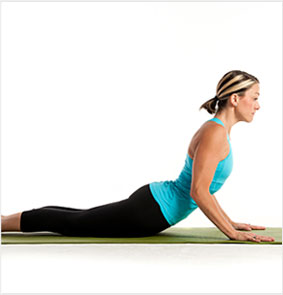 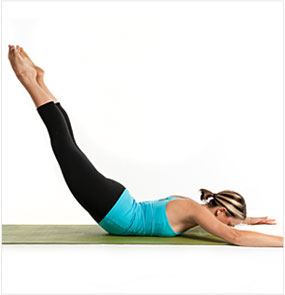 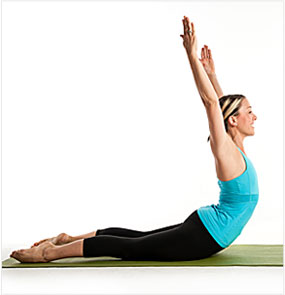
|
Benefits of Practicing Pilates
1. Control
Joseph Pilates called his method of body conditioning "Contrology" or "The Art of Control". Every movement of each Pilates exercise requires complete control of your body by your mind. There should be no sudden, meaningless, or haphazard movements during your Pilates workout, it is a mind body connection. This is why the Pilates method is such a safe exercise regimen. Exercise without awareness and control can lead to injury.
2. Breath
Breath is essential to the Pilates method. Proper breathing oxygenates your blood, increases you circulation and flexibility, deepens the work of your abdominals, and brings a sense of ease to your movement. As a general rule, we inhale to prepare for a movement and we exhale to execute it. Many people tend to hold their breath while exercising, or they only use a shallow breath. Always breath deeply and fully, inhaling through your nose and exhaling through your mouth.
3. Concentration
In order to maximize your workout, you must be completely present during your session. Don't let your mind wander! Concentration is key! It is your mind that connects to your body and moves it into action. Pay attention to all of your movements as you are performing them, and concentrate on improving your form by focusing on every detail of the exercises. The more focus and mindful intention that you bring to your workout the more effective and stronger you will become.
4. Flow
Flow, or the fluidity of motion, is something that really sets Pilates apart from other forms of exercise. There are no static, jerky, or fragmented movements in the Pilates method. Each exercise should have a smooth, graceful, dance-like quality to it. Concentrate on flow not only during each individual exercise, but also on the transitions from one exercise to the next. Seamless fluid transitions thread the exercises together so that your body is constantly in motion and your muscles are constantly working, even in between the exercises.
5. Centering
All of the movements in the Pilates method stem from your core, the center and foundation of your body. Joseph Pilates often called this area the "powerhouse" of your body , and it includes the abdominals, lower back muscles, and buttocks. Each and every exercise in Pilates initiates from the powerhouse and then flows outwards into the periphery of the body. Also, make sure that the body is always centered by using proper alignment and form.
6. Precision
Every exercise in the Pilates method has a purpose and a goal. Therefore, as your approach each exercise be precise and try to execute the exercise as perfectly as possible. As Joseph Pilates used to say "honor every movement". Most of the exercises in Pilates are very low repetition, thus you must focus on doing a few precise perfect repetitions rather than many halfhearted ones. Constantly scan your body and focus on integrating all of the principles of Pilates, control, breath, concentration, flow, centering, and precision.
|
